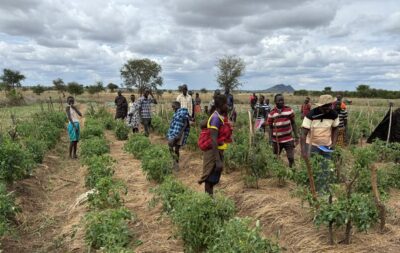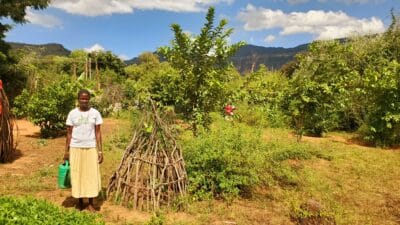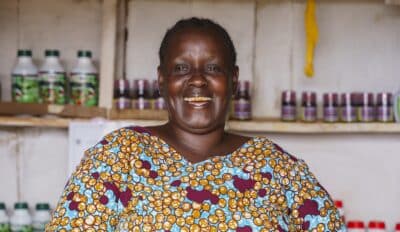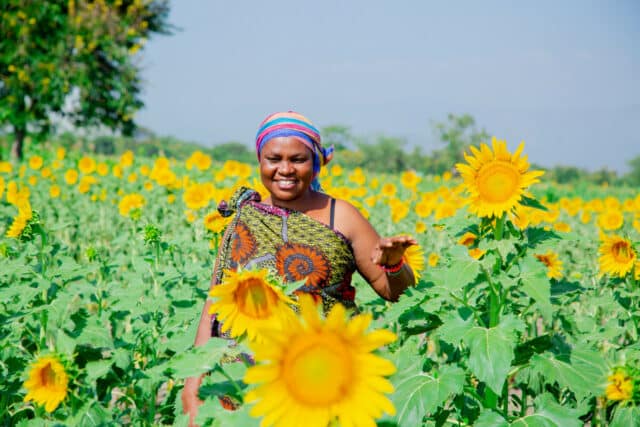Expert view
17 December 2012
Postcard from Tanzania: Open sesame
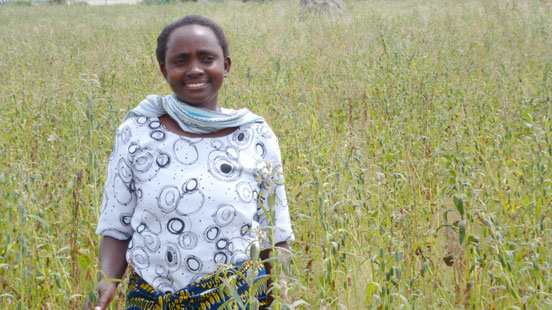
Photo: A member of the Mbugwe co-operative in a field of sesame.
By Goodness Mrema
I recently travelled to Mbugwe to see with my own eyes how Farm Africa has solved a major problem for farmers there: produce rotting or getting damaged after harvest.
A lot of what farmers grow is lost after harvesting, because they have nowhere to store or process it.
But this is changing thanks to Farm Africa, which has built two modern warehouses with good storage facilities, so farmers can keep their sesame until the time is right to sell. They use a new payment system, where farmers receive 60% of the market price when they take their sesame to the warehouse and the remaining money once the produce is sold collectively.
Higher yields
In Mbugwe division, sesame farmers’ yields have shot up since Farm Africa introduced new seed varieties in 2010. The yield per acre is now 5 or 6 bags (425-510kg) – much more than the 40-60kg farmers used to harvest with local seeds.
Constantine Martin told me: “Farm Africa introduced improved sesame varieties, which I received as a seed loan from the co-operative. Last season I took 8kg of seed as a loan and now I can afford to pay it back.”
More profitable
A kilo of the higher-quality sesame sells for almost 45% more than the local variety did, helping farmers provide more for their families.
Farmer Mwanaidi Salim said: “Sesame is more profitable than any other crops I’ve cultivated before in this area because it has a good market and good price compared to other cash and food crops.”
– Goodness is Farm Africa’s communications officer in Tanzania
Read more about how we’re changing sesame farmers’ lives.
